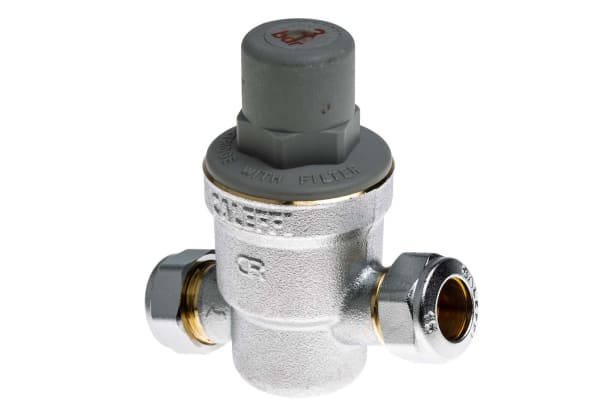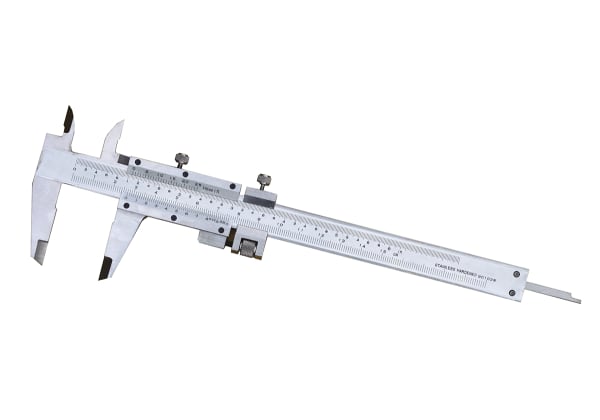- Published 15 Nov 2024
- Last Modified 15 Nov 2024
- 6 min
A Guide to Pressure Calibration
Pressure calibrators are essential tools for ensuring pressure measurements are accurate and reliable. Read our guide to find out more.
Reviewed by Peter Kendall, Technical Support Engineer (November 2024)
Pressure calibration is a fundamental procedure across various industries to ensure that pressure measurements are both accurate and reliable. It entails comparing the output of a pressure measurement device against a recognised reference standard to identify any deviations or errors.
This guide delves into the concept of pressure calibration, its significance, and the different types of pressure calibrators available. Whether you are involved in manufacturing, engineering, or any other sector requiring precise pressure measurements, grasping the basics of pressure calibration is essential.
What is Pressure Calibration?
Pressure calibration is a pivotal process in many industries, crucial for ensuring precise measurements and the reliable functioning of pressure instruments.
Essentially, pressure calibration involves comparing the output of a pressure device with a reference standard to assess its accuracy. The basic principle is to apply known pressures to the device and record the output. By comparing these measured values with the reference standard, any discrepancies can be detected, allowing for necessary adjustments to calibrate the device.
What Does a Pressure Calibrator Do?
A pressure calibrator is an indispensable tool in this process, designed to generate and measure exact pressure levels. This enables technicians to calibrate pressure instruments such as gauges, transducers, and sensors. The calibrator provides a controlled environment where pressure is applied, measured, and adjusted as required.
How Does a Pressure Calibrator Work?
So, how does a pressure calibrator work? Typically, it comprises a pressure source, a pressure sensor, and a display unit. The pressure source generates the desired pressure, the pressure sensor measures the output, and the display unit shows the measured values. This setup allows technicians to compare the output with the reference standard and make necessary adjustments.
Pressure calibration is integral to many sectors, including manufacturing, aerospace, automotive, and oil and gas industries. Accurate pressure measurements are essential for quality control, safety, and adherence to industry standards. By ensuring the reliability and accuracy of pressure instruments through calibration, businesses can optimise their operations and uphold the highest precision standards.
Types of Pressure Calibrators
When it comes to pressure calibration, there are various types of calibrators available. Each type has distinct features and benefits, allowing you to select the one that best meets your needs. Here are some common types of pressure calibrators:
Electric Pressure Calibrators
These devices use an integrated electric pump to generate and measure pressure, making them ideal for calibrating high-accuracy transmitters and pressure switches. By enabling automatic pressure generation, the electric pump lowers manual labour costs and increases efficiency. These calibrators often come with advanced features like data logging, remote control, and automated calibration routines, making them indispensable in both laboratory and field settings.
Piston Gauges
Known for their high accuracy and reliability, piston gauges, also known as pressure balances, use a piston-cylinder system to create highly accurate pressure measurements. They are considered primary standards in many calibration laboratories due to their ability to provide traceable pressure measurements. Piston gauges work on the basis of balancing a known mass on a piston of known area, which produces an exact pressure. This method is highly reliable and is used for calibrating other pressure test and measurement devices to ensure their accuracy.
Deadweight Testers
These instruments are a staple in pressure calibration, using calibrated weights to apply known pressures to the device under test. Deadweight testers are a cost-effective option for a variety of pressure calibration requirements because of their simplicity and accuracy. They are particularly useful in environments where high precision is required, such as in industrial settings and calibration laboratories and they’re widely used for calibrating pressure gauges and transducers.
Handheld Pressure Calibrators
These portable calibrators are compact and user-friendly, making them ideal for field calibration applications where mobility is required. They offer a range of features including the ability to measure voltage, amperage, and digital signals, which makes them suitable for on-site calibration of pressure devices. These calibrators are rugged and easy to use; they frequently include user-friendly interfaces and robust construction to endure challenging field situations.
Digital Pressure Calibrators
Featuring advanced capabilities such as digital displays, data logging, and software integration, digital calibrators provide accurate measurements and are suitable for various pressure calibration tasks. They often feature advanced functionalities such as the ability to measure pressure switches and the 4-20 mA output of pressure transmitters. Digital pressure calibrators are a popular option for both laboratory and industrial applications.
Pressure Calibrator Checklist
Selecting the right calibration instruments for pressure calibration requires considering several key factors. These factors ensure you choose the appropriate instruments for your specific needs. Here are some essential points to keep in mind:
Accuracy: One of the most critical aspects to consider is the accuracy of the pressure calibrator. It is vital to select an instrument that offers high accuracy to ensure precise measurements.
Range: The range of the pressure calibrator is another crucial consideration. Depending on your requirements, you need to choose an instrument with a suitable range that encompasses the pressures you will be working with.
Functionality: Different pressure calibrators offer varying functionalities. Consider the specific features necessary for your calibration tasks. Some instruments may include additional functions such as data logging or advanced connectivity options.
Portability: If you need to perform calibrations in multiple locations, portability becomes a significant factor. Look for pressure calibrators that are lightweight and compact for easy transport.
Calibration Standards: Ensure that the pressure calibrator you select is compatible with the calibration standards you are using. It is crucial to have a reliable instrument that can meet your calibration requirements.
Ease of Use: Consider the user-friendliness of the pressure calibrator. Look for instruments with intuitive interfaces and clear displays for straightforward operation.
Cost: Lastly, consider your budget. While it is important to invest in a high-quality pressure calibrator, it is also essential to find a product that fits within your budget constraints.
By considering these key factors, you can select the appropriate calibration instruments for your pressure calibration needs. RS stocks a variety of tools and devices to ensure equipment is in good working condition. Browse our test and measurement range today.
Related Articles
Related links
- Pressure Calibrators
- Torque Testers
- WIKA 48804432 Pressure Calibrator Calibration Kit, For Use With Precision Hand-Held Pressure Indicator
- Fluke 750PD27 Pressure Module 726, 750 Series 300psi With RS Calibration
- Fluke 750P05 Pressure Module 726, 750 Series 30psi With RS Calibration
- Fluke Pressure Calibrators
- Temperature Calibrators
- Pressure Calibrator Accessories



